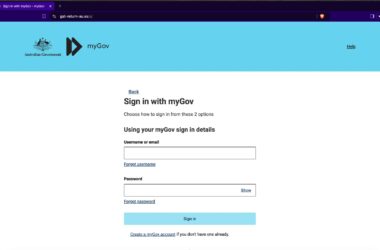As the tax season starts to draw to a close, the tax scams are on the increase, and some may sound legit. Are they, and how do you know?
It’s the end of the DIY file-it-yourself period of the 2019-2020 Australian tax season, and past the end of October, the time to file tax without penalty will come from registered tax agents. That’s totally normal and not anything suspicious, but try telling that to scammers, which are out in force, doing what they can to convince folk that they’re under investigation, and to fall for their scams.
In the past couple of weeks, we’ve noticed more of the scams coming in, and through your phone, as scammers use an approach that is easier to fall for because of the trust we have in our phones for this sort of thing.
The lure of a threat
Everyone can get these phone calls, from someone who regularly pays their tax to someone who might be a little late. The fact that you get these calls actually has nothing to do with you paying your tax. It has to do with the fact that you have a phone number. And since nearly everyone has a phone number, nearly everyone is at risk.
The scam works like this:
You get a phone call out of the blue, and as you pick up, the robotic call kicks in to action, a pre-recorded Australian robotic voice of sorts with a very staccato sound informing you that it’s a call about the Australian tax office, and that you are under investigation for “tax avoidance”. If you would like to learn more, press one, and you’ll be put through to someone to talk to.
It’s not unusual to think that a phone call suggests it’s more real than your stock standard email scams, much like how someone texting your phone via SMS could be more legitimate than standard spam. But that’s just part of the mindset scammers hope you fall for, and it’s much easier to spot that this is a lie.
The lure is a lie
This scam perpetuates in many ways, and can arrive in different languages. It’s a similar take on one that has been going around Australia for the past couple of years in foreign languages, as scammers attempted to cash in on people who were living in Australia from abroad. You might have picked up one of these phone calls in the past, heard the foreign language, and just hung up.
Believe it or not, this is basically the same concept.
In the Chinese robocall scams, international students were targeted for much the same thing, but the calls came in Mandarin, and understandably caught the attention of the Australian Federal Police. It was a scam, and a dangerous one, basically using fraud to take money from people who didn’t know any better.
The Australian English equivalent is much the same, and uses a robotic Australian voice to tell people in English that they’re wanted for taxation crimes such as impersonation and avoidance. Press one to continue, to speak to someone who can assist.
But it is just a scam, and it’s one security solutions can’t do much to fix. Rather, the learnings on this one come solely from education, and knowing what you have to do if you get one.
“Cyber criminals are constantly getting more advanced in the ways they conduct these types of scams,” said Noushin Shabab, Senior Security Researcher at Kaspersky. “In some cases, it is not even easy for tech-savvy people to understand if they are being the target of a scam.”
Don’t press one: hang up or wait
We’re not sure how many scammers read our site, but if you don’t want to be scammed, there are some easy wins you can do to avoid the scam. One of these is to hang up the moment something sounds wrong — a robotic caller that you can’t talk to is totally different from someone you can — and the other is to wait.
Waiting is different from hanging up, because it’s what we do when we’re unsure. These calls ask you to press a number to learn more — press one to continue — but doing that sends a signal to the automated phone call system that you’re ready to take the next step in the scam, and talk to someone about their fiction.
So don’t press one. Do not press one to continue. Pressing one will put you in contact with a scammer happy to read to you from their script, and sell you something you don’t want to buy in the first place.
Waiting, however, will typically see the call hang up not long after. Waiting can give you the proof you need to make sure it’s not the real deal, which is how regular on-hold services work if you dial in yourself. If you were to dial into a phone service, you can typically expect the options to repeat themselves several times before hanging up. In a robocall scam, the message typically plays once and then ends.
Hanging up should be your first option, but if you’re still not sure, you can hold the line and wait for the call to end itself.
Call the organisation using their official phone number for proof
“It’s always best not to respond to any unsolicited calls that ask for your personal or any other sensitive information,” said Shabab.
“The best way to deal with such calls is to end the call, authenticate the phone number and their business for example, from a trusted source such as the organisation’s official website, find their phone number and call them yourself.”
Simply put, if you’re not sure whether the call is legit, and are concerned that it might be, call the organisation for proof.
Worried that you’ve been called by the ATO or AFP, or anyone else, or that the implications in the short automated message could be legit? Use some common sense, find the number on Google that belongs to the actual organisation, and call them up.
These calls are not new, and they are increasing, as scammers make use of the technology available to them to attempt to get money out of you through whatever means. That money is essentially a ransom on something non-existent, to pay your way out of a fictional charge using money or gift cards or bitcoin or something else. They arrive alongside other scams using your phone, such as the Wangiri call-once scam, and even the assortment of SMS scams.
But they are just scams, and if you were actually under investigation, you’d have received more than just a random robocall in the dark asking for money.







